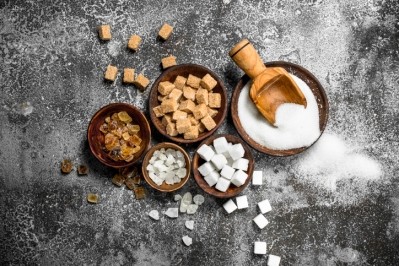Tagatose finds a home in lean labeling

Kappas refers to tagatose as a lean label ingredient, “meaning that it could be a sole sweetener in many food products; and unlike things that are maybe 60% to 70% as sweet [or] might need to be topped up by a high potency sweetener, which is not necessary with tagatose.”
He added, "that concept of simplicity is a trend in the industry and tagatose would fit well with that kind of trend."
While “no sugar” is the most desired claim for manufacturers, Kappas explained that tagatose, which is 90% sweet as sugar, offers benefits from a nutritional standpoint.
“It’s 1.5 calories per gram, which is about 60% less calories than caloric sugar, it has a glycemic index [GI] of three and it has been officially keto certified. The most interesting property is it is metabolized as a prebiotic, so it generates short chain fatty acids in the gut,” Kappas elaborated.
For comparison, glucose has a GI of 100 and sucrose a GI of 65.
Classification as 'added sugar' slows industry adoption of tagatose
Despite the reported health benefits of tagatose, FDA’s classification — which based on calories per gram — has “significantly slowed interest in adoption by many who were expecting to use it as an alternative to things like polyols and high potency sweeteners…and even to some extent other bulk alternatives such as soluble fibers,” Kappas said.
While tagatose is not new to food and beverage, its complex process which starts with lactose to produce at commercial scale served as a costly barrier. Bonumose, ASR Group's partner, most notably patented an alternative cost-effective production method from plant-based starches using an enzymatic process, opening accessibility for manufacturers.
Yet, Kappas remains optimistic of tagatose’s classification, citing that half of its more than 250 active prospects are interested in the ingredient since it offers no artificial sweetener or polyol claims, and is suitable for keto and diabetic-friendly diets.
Along with ASR Group, companies like Hershey and Symrise Flavors have invested in Bonumose, building up its partnerships towards “sugar reduction from a flavor system standpoint and not only from an overall food formulation standpoint,” he added.
From a functional perspective, tagatose shines in baked good and snacks “where you want some Maillard formation, caramel notes and just the appearance of a light brown, which is more eye appealing," Kappas explained.
In confections and chocolates, tagatose’s non-hydroscopic properties that keep it from absorbing water serve as an asset; while its freeze point depression property in frozen desserts allows for “a typical melt, as opposed to some of the alternatives that can produce a very icy or hard freeze,” he said.
Particularly around fruit and more delicate flavors, Kappas explained that tagatose serves as a “very clean tasting carrier,” allowing the flavors to come forward more easily in a formulation.





















